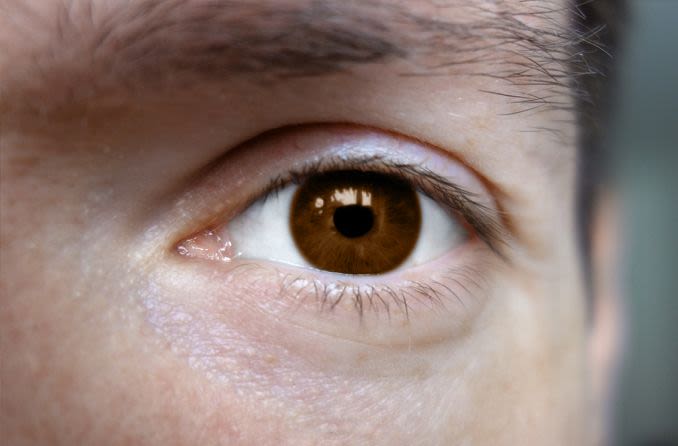Refractive errors and refraction: How the eye sees

Schedule an exam
Find Eye DoctorWhat is a refractive error?
Blurry vision — usually caused by refractive errors — is the main reason a person seeks the services of an eye doctor.
But what does it really mean when we’re told that our vision is blurry because we have a refractive error?
We see the world around us because of the way our eyes bend (refract) light. Refractive errors are optical imperfections that prevent the eye from properly focusing light, causing blurred vision.
The primary refractive errors are nearsightedness, farsightedness and astigmatism.
Refractive errors usually can be “corrected” with eyeglasses or contact lenses, or they can be permanently treated with LASIK and other vision correction surgery (also called refractive surgery).
SEE RELATED: What is ametropia?
How light travels through the eye
In order to see, we must have light. While we don’t fully understand all the different properties of light, we do have an idea of how light travels.
A light ray can be deflected, reflected, bent or absorbed, depending on the different substances it encounters.
When light travels through water or a lens, for example, its path is bent or refracted. Certain eye structures have refractive properties similar to water or lenses and can bend light rays into a precise point of focus essential for sharp vision.
Most refraction in the eye occurs when light rays travel through the curved, clear front surface of the eye (cornea). The eye’s natural lens also bends light rays. Even the tear film on the surface of the eye and the fluids inside the eye (aqueous humor and vitreous) have some degree of refractive ability.
How the eye sees
The process of vision begins when light rays that reflect off objects and travel through the eye’s optical system are refracted and focused into a point of sharp focus.
For good vision, this focus point must be on the retina. The retina is the tissue that lines the inside of the back of the eye, where light-sensitive cells (photoreceptors) capture images in much the same way that film in a camera does when exposed to light.
These images then are transmitted through the eye’s optic nerve to the brain for interpretation.
Just as a camera’s aperture (called the diaphragm) is used to adjust the amount of light needed to expose film in just the right way, the eye’s pupil widens or constricts to control the amount of light that reaches the retina.
In dark conditions, the pupil widens. In bright conditions, the pupil constricts.
Causes of refractive errors
The eye’s ability to refract or focus light sharply on the retina primarily is based on three eye anatomy features: 1) the overall length of the eye, 2) the curvature of the cornea and 3) the curvature of the lens inside the eye.
Eye length – If the eye is too long, light is focused before it reaches the retina, causing nearsightedness. If the eye is too short, light is not focused by the time it reaches the retina. This causes farsightedness or hyperopia.
Curvature of the cornea – If the cornea is not perfectly spherical, then the image is refracted or focused irregularly to create a condition called astigmatism. A person can be nearsighted or farsighted with or without astigmatism.
Curvature of the lens – If the lens is too steeply curved in relation to the length of the eye and the curvature of the cornea, this causes nearsightedness. If the lens is too flat, the result is farsightedness.
More obscure vision errors, known as higher-order aberrations, also are related to flaws in the way light rays are refracted as they travel through the eye’s optical system.
These types of vision errors, which can create problems such as poor contrast sensitivity, are detected through new technology known as wavefront analysis.
Detection and treatment of refractive errors
Your eye doctor determines the type and degree of refractive error you have by performing a test called a refraction.
This can be done with a computerized instrument (automated refraction) or with a mechanical instrument called a phoropter that allows your eye doctor to show you one lens at a time (manual refraction).
Often, an automated refraction will be performed by a member of the doctor’s staff, and then the eye doctor will refine and verify the results with a manual refraction.
Your refraction may reveal that you have more than one type of refractive error. For example, your blurred vision may be due to both nearsighted and astigmatism.
Your eye doctor will use the results of your refraction to determine your eyeglasses prescription.
A refraction, however, does not provide sufficient information to write a contact lens prescription, which requires a contact lens fitting.
Eyeglass lenses and contact lenses are fabricated with precise curves to refract light to the degree necessary to compensate for refractive errors and bring light to a sharp focus on the retina.
Vision correction surgeries such as LASIK aim to correct refractive errors by changing the shape of the cornea, so that light rays are bent into a more accurate point of focus on the retina.
See an eye doctor
The only way to know for sure if you are seeing as clearly as possible is to see an eye doctor.
READ NEXT: How far can the human eye see?
Page published on Monday, October 21, 2019




